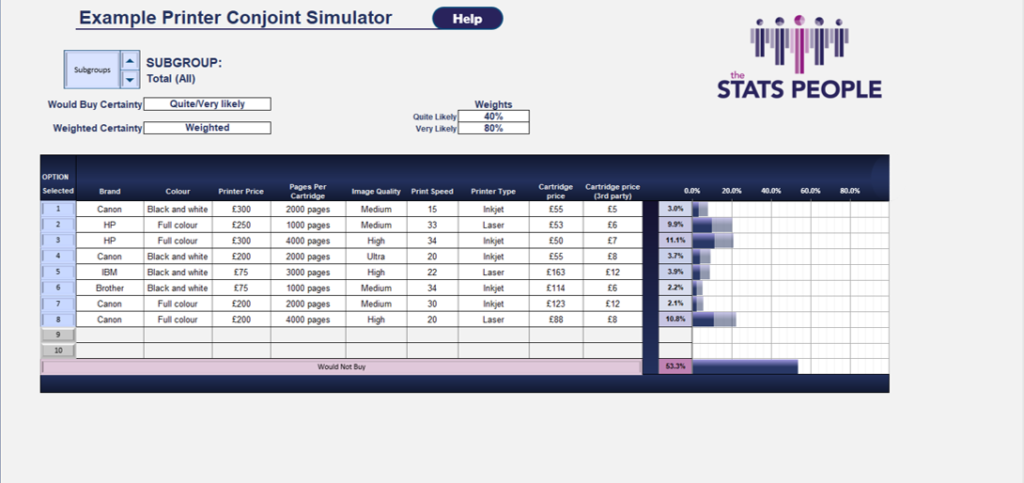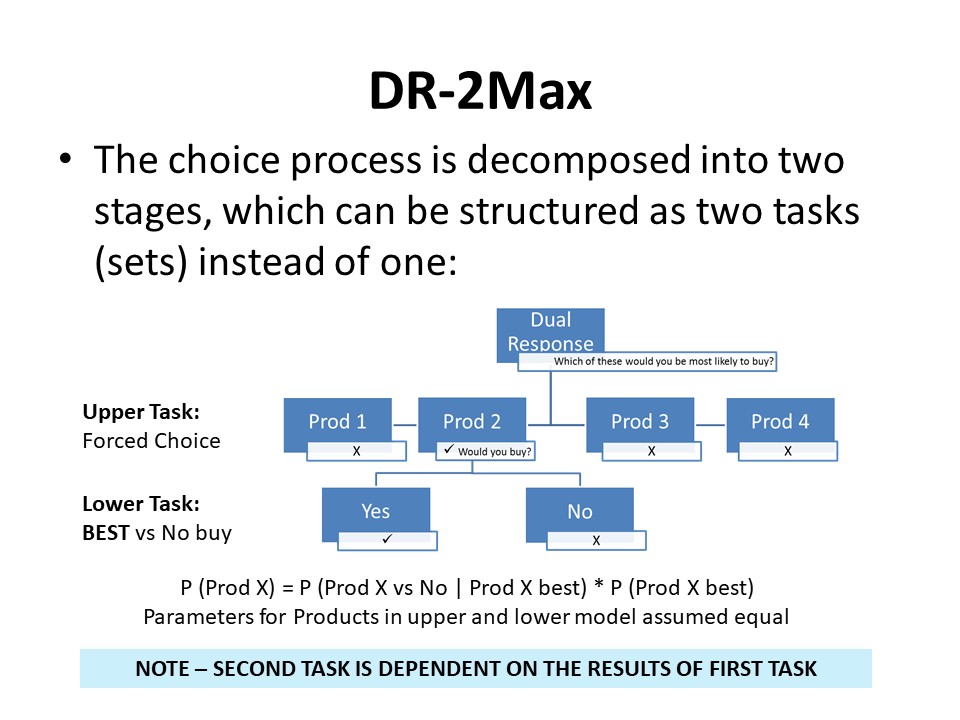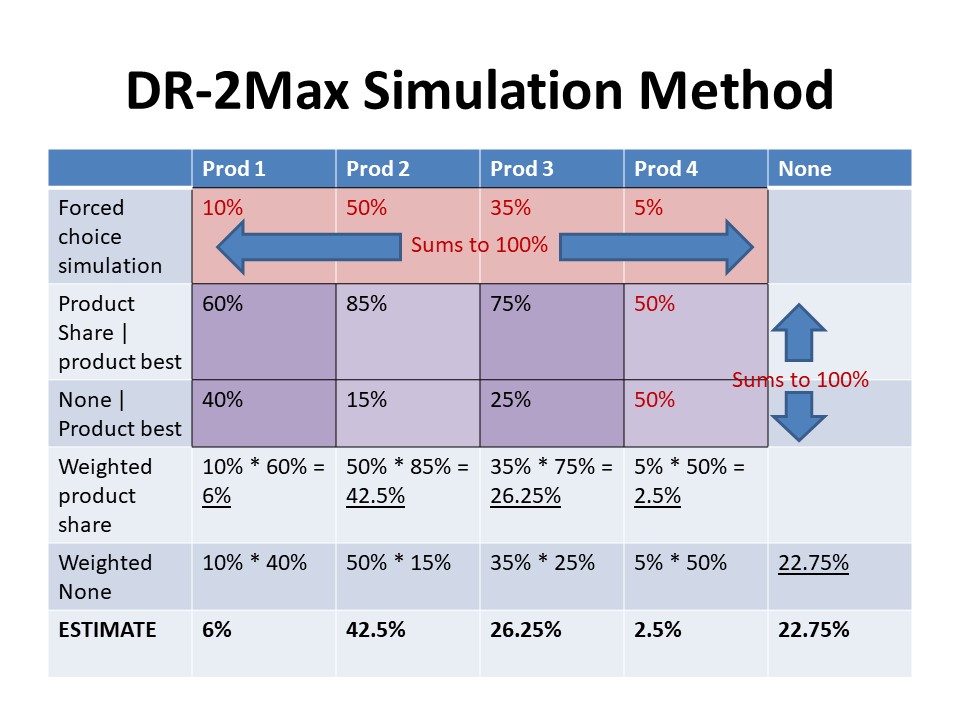Author: Gary Bennett
Dual Response Format
The method used to simulate the “buy vs no buy” decision is an important part of any choice model. Traditionally the “dual response” question format has been used to capture this with either a yes/no question or as a “likelihood to buy” scale:
Q1a Which Product are you MOST likely to buy?

Q2 ver1: Would you buy your MOST preferred product?
OR
Q2 ver2: How likely are you to buy your MOST preferred product?
The binary question can suffer from over-claiming and lack of granularity, whereas the scale requires that the analyst make a decision prior to modelling as to which “cut point” should be used as a threshold for “buy” (i.e. top box, top 2 boxes etc.).
NEW: Self Calibrating “No buy”
Our new method allows likelihood of purchase in version 2 of the Dual Response question to be simulated over an entire scale simultaneously, with preference share forecasts and user specified category weights.

In the example the user has specified that they believe 80% of the “certain” category, 40% of the “very likely” category and 10% of the “fairly likely” category will buy in reality; the other categories are assumed to all be “no buys”. These numbers can be set by the user allowing full calibration of the “No buy” option to realistic market conditions if needed.
This enables the implementation of a fully flexible “no buy” option whereby end users of the simulator can specify which cut off point on the scale they wish to use for specifying a “buy” AND weight the contribution of each category.

New: Better “No-buy” simulation
The traditional approach of modelling all options + none simultaneously has been shown to produce unrealistic simulations as the number of products simulated diverges from the number used in the experimental design, especially when similar options are simulated.
All of our choice simulators now implement our customised DR-2Max method for modelling “no buys” as standard, giving more realistic simulations where the number of products simulated is different from those in the experimental design used to build the model.


At the Stats People, we are constantly striving to make our models and simulators as accurate and flexible as possible. Both of these innovations are now fully integrated into our client work.
